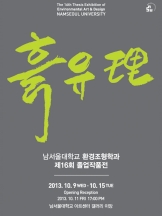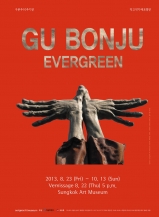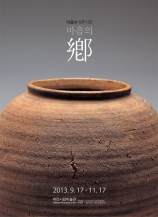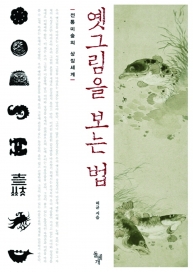|
레일웨이 트래블러스 핸드북 <The Railway Traveler's Handbook>
6채널 소리극(사운드드라마/사운드스케이프)과 빛 설치
극본, 연출 김아영
장소: 문래예술공장 2층 박스씨어터 서울특별시 영등포구 문래동1가 30 http://www.seoulartspace.or.kr/G05_mullae/main.asp 02-2676-4300
오프닝 리셉션: 2013.10.4 (금) 5:00 PM~
일정: 2013.10.4(금) ~ 6(일) 3일간 시간: 1회 30분, 매일 4회, 30석 제한 5:00~5:30 PM 6:00~6:30 PM 7:00~7:30 PM 8:00~8:30 PM *정해진 시간 외에는 입, 퇴장하실 수 없습니다. *매회 30석까지만 입장이 가능합니다.
사운드 디자이너: 임대웅 조명 디자이너: 민새롬 조연출: 목소
목소리 연기 (가나다순) : 가레스 파닌 렉스 홀 브라이언 포브스 섀론 권 전유경 정나진 정세라 젬마 애플톤 최승일 타라 허만
후원: 서울문화재단, 한국문화예술위원회
www.ayoungkim.com
Project
<레일웨이 트래블러스 핸드북>은 19세기 중반 시작된 철도라는 컨텍스트를 분석하고 직조해 낸 30분 분량의 6채널 소리극(사운드드라마/사운드스케이프)과 빛 설치 작업이다. 철도의 근대성, 그리고 시공을 초월해 나타나는 편재성과 원형성에 대한 작업으로, 객석과 무대가 분리되지 않은 극장 공간에서 6개의 스피커와 빛에 둘러싸인 관객의 공감각적 체험을 이끈다. 다양한 시점의 분절된 대사, 가상의 라디오방송, 조율되지 않은 코러스 등의 텍스트는 19세기 말~20세기 초 신문과 사료, 광고 등에서 추출된 후 혼성적으로 직조되어 성우와 배우들에 의해 표현된 녹음으로서, 증기기관차의 앰비언스, 각종 사운드스케이프와 함께 전체를 구성하는 소리를 이룬다.
이 작업은 다층적 시대와 지역, 그리고 달리는 열차의 내/외부 공간을 아우르며 역사적 흐름과 내러티브를 상상하게 하는 실험이자 시도이다. 이 사운드드라마/사운드스케이프와 빛 설치는 다양한 레이어의 시간이 뒤섞인 가운데 세계 곳곳을 관통하는 열차의 안과 밖으로 철도여행객을 안내한다.
The mission of the locomotive: the magical bands of iron to all the populous towns in the world!
Context
1.
'최근의 괴상한 철도 체계가, 많은, 아주 많은 이들의 식료품마저 빼앗아 갔습니다.' - 샬롯 브론테, 1845 (번역 'Many–very many are–by the late strange Railway System deprived almost of their daily bread.' - Charlotte Brontë, 1845)
모든 물질은 비물질을 이동시킨다. 길과 도로는 힘과 자본의 이동이기도 하다. 철도는 19세기 초반 근대와 함께 생겨나 근대를 실어 날랐다. 물리적 이동을 위한 기술적 장치로서의 철도는 제도적 힘의 이동을 가능케 했다. 의도되었건 의도되지 않았건 제도를 구축하기 위한 가장 좋은 방법은 시간의 통합이자 공간의 축소였다. 철도 시간표는 세계의 시간을 통합했고, 이로써 보다 신속하게, 예견된 이동과 이송, 확장이 가능해졌다.
19세기 초 영국에서 증기기관이 발명된 후, 영국 전역을 철로로 잇는 철도건설 붐이 일었다. 1845년 정점을 이룬 '레일웨이 매니아' - 철도 광란이라고 불렸던 철도 건설 투기 붐은 세계사에 기록된 집단적 주식 투기로, 귀족, 귀족 부인, 평민, 상인, 장인, 하인, 직공 등 모든 계층이 얽혀든 광기였으며 크고 작은 몰락이 잇따랐다. 이 투기에 가담한 이들 중에는 샬롯 브론테나 찰스 다윈 등의 명사도 있었다. 어쨌든 이 광란으로 인해 영국은 전국을 촘촘히 연결하는 철도망을 확보했다. 정확히 같은 시기에 아일랜드는 주요 농작물이었던 감자에 번진 전염병으로 인해 오랜 기간 지속되는 대기근을 겪었다.
철도는 차츰 유럽 전역으로, 나아가 세계 곳곳으로 확산되었다. 프랑스에서도 규모는 작으나 비슷한 양상의 철도 건설 붐이 일어났으며, 스위스의 융프라우 관광지로 향하는 산간 철도는 산맥의 경관을 망가뜨린다며 일부의 불만을 사기도 했다.
19세기 말 유럽에서는 동아시아를 향한 러시아의 세력 확장의 일환으로 시베리아횡단철도의 남단 종착역이 부산이나 목포 등지의 한국 도시들이 될 것으로 예상해 이를 예의 주시했다. - '빠르든 늦든 간에 철도는 시베리아횡단열차의 남쪽 종착역으로 한반도에 연장될 것입니다.' (Sooner or later the line will be continued, as part of the Russian railway system to the southern extremity of the Corean peninsula. - Coventry Evening Telegraph, Sep 25, 1894) 비슷한 시기에 영국의 동아프리카 회사는 케냐의 몸바사섬과 우간다를 잇는 우간다 철도를 완공했다. 이 지역을 아프리카 적도 부근의 중심지이자 상업의 관문으로 삼기 위해서였다. 또한 우간다는 나일강 상류를 내려다보는 위치에 있어서, 이 지역 철도는 영국이 이집트를 제어하는 동안 정치적으로 자리매김을 하기도 했다. '루나틱 익스프레스'라고도 불렸던 이 철도는 유럽의 공산품과 아프리카의 상아 및 광물 무역을 아우르는 거대한 마켓을 열었다. 비물질을 이동시키는 물질이라는 맥락에서, 아프리카 철도는 자본과 제국의 확장을 가능케 한 길이었다.
한국 철도건설을 둘러싼 맥락도 크게 다르지 않았다. 19세기 말, 한국을 식민화하는 초기단계에서부터 대규모 철도사업을 서둘러 추진했던 일본은 동경역에서 출발해 부산역, 경성역을 지나 대륙 곳곳을 향해 뻗어 나가게 될 철도를 제국주의의 통로로 삼으려 했었다. 일본이 주축이 되어 진행된 한반도 철도건설은 이후 러일전쟁 중 군수물자 및 군력 수송에 주요한 역할을 했다. 흥미로운 점은, 한반도 철도건설에 쓰인 각종 자재와 기관, 열차 등이 유럽에서 수입되었다는 사실이다. 새 철도 건설은 시초부터 유럽에 미개척된 좋은 마켓을 열어주었다. 근대의 이동인 셈이다.
2.
로마제국이 그리스 차지의 남부 이탈리아 위에 놓여 있었듯, 시베리아 동부의 러시아 세력은 한국 북쪽에 놓여 있네. - 코벤트리 이브닝 텔레그라프 신문, 영국, 1894년 9월 25일
러시아의 세도가였던 라스푸틴의 딸 마리아 라스푸틴은 1930년대에 유럽과 미국에서 조랑말 또는 사자와 함께 하는 서커스를 펼쳤다. 1930년, 그가 속해 있던 서커스단이 프랑스 보르도에서 공연을 마치고 러시아로 향했던 여정은 얼음밭, 스텝 대초원과 마른 사막, 잔잔한 호수와 협곡을 뚫고 질주하는 시베리아횡단열차의 선로 위였을까? … 알 수 없는 일이다. 그러나 6년 후, 확실히 한국의 마라토너 손기정 선수는 시베리아횡단열차를 타고 그에게 금메달을 안겨 준 베를린 올림픽에 참여하기 위해 떠났다. 서울-신의주-하얼빈-만주-시베리아를 거쳐 모스크바에 도착해 다시 베를린행 열차로 갈아타는 여정이었다. 배나 비행기를 통한 여정이 필요 없었던, 한국과 유라시아 대륙이 철도로 이동이 가능한 연속된 공간이었다는 점은 새삼스럽다. 어떤 의미에서는 분단 이후로 섬보다 더 차단된 지정학적 상황에 익숙해진 한국인이 세계를 경험하고 인식하는 방법의 근간이 달랐으리라는 추측도 가능하다. 한반도에는 이미 20세기 초에 서울과 부산을 잇는 경부선과 서울과 개성, 평양, 신의주를 잇는 경의선을 통해 한반도종단철도가 완성되어 있었던 것이다. 서울역은 현재와 같은 한국의 출발역이자 종착역이 아니라 국제 철도망에 놓인 중간역이었고, 서울발 경의선은 국경에서 만주횡단열차 혹은 시베리아횡단열차로 연결될 수 있었다. 또한 남쪽으로는 경부선 끝에서 현해탄을 건너 일본 내 철도로 연결되었다.
앞서 서술한 시간들보다 훨씬 현재와 근접한 과거에, 러시아의 블라디미르 푸틴 대통령은 시베리아 송유관 건설이 시베리아 철도 건설에 필적할 만한 대역사라고 그 의의를 높이 평가했다. 그리고 현재 러시아는 한반도를 통과하는 가스관 건설, 나아가 철도 연결에 대해 적극적 관심을 보이고 있다고 한다. 과거에는 석탄이 생산되는 곳을 따라 철도가 놓였고, 이후에는 송유관을 따라 철도가 놓였다는 점에서, 가스관 역시 철도와 공간적 흐름을 함께 한다. 그러나 그 실현 여부는 이 글을 읽고 있는 우리의 소관이 아니며, 단지 이 작업을 통해 한반도종단열차 즉, TKR (Trans-Korean Railway)의 복원, 그리고 세계를 관통하는 열차에 몸을 싣는 일을 상상해 볼 수 있을 것이다.
한편, 철도는 비물질을 전송하는 물리적 띠일 뿐 아니라, 불가피하게 철로와 철로 사이에 놓인 역-교차점과 그 사이를 스치는 여행을 전제로 한다. 누군가는 그 위에서 만나고, 또 헤어진다. <레일웨이 트래블러스 핸드북>은 무대 위의 소리와 목소리, 빛의 공간 안으로 관객을 맞아들이고, 임의의 관객은 철도 여행객이 되어 몸바사에서 키쿠유에 이르는 철도가 지나는 자연의 소리에 귀 기울이기도 하고, 은식기와 도자기로 제공되는 케이터링 서비스에 대해 듣기도 하며, 차분한 음성의 안내원으로부터 달리는 열차에서 뛰어 내리는 방법에 대해 듣기도 하는 등, 선로 위의 다양한 인물들과 조우한다. 시공을 초월한 철도 여행객을 위해 특별히 고안된 안내서를 경험하는 것이다.
(김아영, 2013)
공개강연
<레일웨이 트래블러스 핸드북> 을 둘러싼 철도와 근대 Railways and Modernity as expressed in Ayoung Kim's The Railway Traveler's Handbook
강연자: 서해성 소설가, 김아영 작가 Haesung Seo, Ayoung Kim 일시: 10.23 (수) 오후 6:00~7:30 장소: 대학로 예술가의 집 3층 세미나실 2호 서울특별시 종로구 동숭길 3 (동숭동 1-130) / TEL : 02-760-4715 (문의: 010 5369 2873) http://artisthouse.arko.or.kr/ 예약문의: 25명 선착순 예약, therailwaytraveler@gmail.com, 010 5369 2873으로 연락처와 함께 예약 바랍니다.
한겨레 신문의 정기 칼럼과 '한홍구 서해성의 직설' 등의 저서를 통해 진보의 발언으로 잘 알려진 서해성 소설가와, 작가 김아영은 그간 철도의 컨텍스트에 대한 논의를 나누어 왔다. 서해성 소설가를 초대해, 19세기 중반 영국에서 개발되어 전 세계로 확산된 철도와 근대의 상관관계, 그리고 철도를 통한 자본주의와 제국주의의 확산에 대해 이야기하는 시간을 갖는다. 김아영 작가의 사운드드라마/사운드스케이프와 빛 설치의 공감각적 작업 <레일웨이 트래블러스 핸드북 The Railway Traveler's Handbook>에 나타난 철도의 컨텍스트에 대해서도 함께 논한다.
김아영 작가: 한국과 영국에서 시각디자인, 사진, 순수미술을 공부했고, 비디오, 사운드, 이미지, 텍스트-내러티브 구조를 이용해 작업하는 시각예술가. 세계사와 한국 근대사가 교차하는 역사적 시공간에 관심을 갖고 작업하고 있다. 2011년 아르코 지원으로 베를린의 베타니엔 스튜디오에서 작업했으며, ‘아트스펙트럼 2012‘ (리움미술관), ’플레이타임‘ (문화역서울284), ’Korean Eye: 에너지와 물질' (Fairmont Bab Al Bahr, 아부다비; Museum of Arts and Design, 뉴욕), 'Korean Eye 2009: Moon Generation' (Saatchi Gallery, 런던) 등의 전시에 참여했다. 2010년 브리티쉬 인스티튜션 어워드 (로얄 아카데미 오브 아트, 영국) 수상, 퓨쳐 맵 프라이즈 파이널리스트 (176/Zabludowicz Collection & University of the Arts London, 영국) 등에 선정되었고, ‘플래쉬 포워드-Emerging Photographers‘ (마젠타 파운데이션, 캐나다)를 수상했다.

The Railway Traveler's Handbook
6-Channel Sound Drama/Soundscape and Lightscape
Written and Directed by Ayoung Kim
Box Theatre (2F), Seoul Art Space_Mullae 30 Mullaedong 1(il)-ga, Yeongdeungpo-gu, Seoul, South Korea
http://www.seoulartspace.or.kr/G05_mullae/main.asp 02-2676-4300
Opening Reception: 4 Oct 2013 (Fri) 5:00 PM onward
4 Oct 2013 (Fri) ~ 6 (Sun) Showtime: 30 Minutes per a Show, 4 Times Everyday 5:00~5:30 PM 6:00~6:30 PM 7:00~7:30 PM 8:00~8:30 PM *Members of the audience can enter and leave the theatre only at the time stated above. * Seats Limited to 30 People per a Session.
Sound Designer: Daewoong Lim Lighting Designer: Sae-rom Min Assistant Director: Morceau
Voice Actors (Alphabetical Order): Brian Forbes Gareth Fannin Gemma Appleton Lex Hall Najin Jung Sera Jung Seungil Choi Sharon Kwon Tara Herman Yoo-Kyung Chun
www.ayoungkim.com
Project
The Railway Traveler's Handbook is a 30 minute-long installation work consisting of a 6-Channel Sound Drama/Soundscape and Lightscape that analyzes the context of railways, which were first laid in the mid-19th century. The work intends to lead the audience through a synesthetic experience within the space of a theater where the audience seats are not separated from the stage. It is a work about railroads-a modern invention, an omnipresence and a prototype.
The text, which consists of narratives articulated in many points, virtual radio broadcasts, and an untuned chorus, is a recording made by dubbing artists and actors of extracts from newspapers, historical materials, and ads from the 19th century and the early 20th century. Along with the steam locomotive’s ambience and Soundscape, it makes the sound that organizes the whole.
This work represents both an experiment and an attempt to lead the audience to imagine the historical flow and narratives, putting together multi-layered eras, regions, and the interior and exterior of a running locomotive. The installation of Sound Drama/Soundscape and Lightscape introduces train passengers to the inside and outside of a running locomotive that moves through various places in the world amid the mixing of multi-layered time.
The mission of the locomotive: magical bands of iron to all the populous towns in the world!
Context
1.
'Many–very many- are, by the late strange Railway System, deprived almost of their daily bread.' - Charlotte Brontë, 1845
All materials carry non-materials. Roads are a means of moving power and capital. In the early 19th century, the railway was born with the start of the early modern period and used to carry goods made in that period. As a machine created for physical transportation, railways enabled the movement of systemic power. Whether intended or not, the best way to establish a system consisted in the integration of time and the narrowing down of space. Railway schedules integrated the time of the world. With it, more prompt prediction of movement, transportation, and expansion became possible.
The invention of the steam engine in the United Kingdom in the early 19th century was followed by a nation-wide railway construction boom. The stock speculation frenzy arising from this boom, widely referred to as ‘Railway Mania’, reached its climax in 1845. It was a frenzy recorded in world history and involved people from all walks of life – peers and peeresses, commoners, merchants, tradesmen, domestic servants, operatives. Ruin, small and large, followed. Even famous figures such as Charlotte Brontë and Charles Darwin were seized by the fever. Anyhow, the frenzy helped the United Kingdom build a closely-knit railway network throughout the entire country. During the same period, Ireland suffered the 5-year-long Great Famine due to an epidemic of potato blight which destroyed the country’s major crop.
Railways gradually expanded throughout Europe and many other parts of the world. In France, a similar railway construction boom occurred-although on a smaller scale that in the United Kingdom. Elsewhere, some people complained that the mountain railway installed on the path to Jungfrau, Switzerland spoiled the natural landscape.
Towards the end of the 19th century, Europeans expected that the southernmost station of the Trans-Siberian Railway would be Busan or Mokpo of Korea as part of Russia’s attempt to extend its power into East Asia, and hence followed such developments with close attention. - 'Sooner or later the line will be continued, as part of the Russian railway system, into the southern extremity of the Corean peninsula. (Coventry Evening Telegraph, Sep 25, 1894) Around that time, the East Africa Company of the United Kingdom completed the railway linking Mombasa of Kenya with Uganda in connection with the plan to establish the area as a commercial gateway to the equatorial regions of Africa. Located along the upper reaches of the Nile, Uganda and its railway played a politically important role during the United Kingdom’s control of Egypt. The railway, also dubbed the ‘Lunatic Express’, opened the way to a huge market for the exchange of manufactured goods from Europe with ivory and ores produced in Africa. In the context of ‘materials moving non-materials’, the African railway facilitated the expansion of capitalism and imperialism.
The context surrounding railway construction in Korea was little different from the situation described above. Towards the end of the 19th century, Japan planned to put the railway linking Tokyo with Busan and Gyeongseong (Seoul) and extending to the Asian Continent at the service of its imperialistic ambitions, and included it in its plan to make Korea its colony. The railway built on the Korean Peninsula, with Japan playing a central role, contributed greatly to Japan’s victory in its wars with Russia. one interesting thing here is that the materials, engines, and locomotives used for the railway on the Korean Peninsula were imported from Europe. The construction of new railways opened uncultivated goods markets to Europeans from the beginning. It was a movement of early modern times, as it were.
2.
'As Rome lay north of Magna Graecia, so does the Russian power in Eastern Siberia lie north of Corea.' - Coventry Evening Telegraph, Sep 25, 1894
Maria Rasputin, the daughter of the famous Russian 'Mad Monk,' performed in a circus with trained ponies and lions in the United States and Europe in the 1930s. In 1930, her circus company finished a tour of performance in Bordeaux, France and might return home to Russia. Did they take a Trans-Siberian train that ran through icy fields, the steppes, deserts, along calm lakes, and through canyons? There is no record about it. In 1936, Korean marathoner Son Gi-jeong travelled to Berlin on the Trans -Siberian Railway to take part in the Olympic Games, where he went on to win a gold medal. His trip took him from Seoul to Sineuiju and then to Harbin, Siberia, and Moscow, where he changed to another train bound for Berlin. It’s scarcely believable that one could actually travel from Seoul to Berlin on a train in those days. Since the division of the country, South Koreans have lived in a geopolitical situation akin to that of living on an isolated island. Without the division, the way they experience and view the world would be much different. By the early 20th century, there was a railway linking Busan with Sineuiju. It was also linked with the Trans-Manchurian Railway and the Trans-Siberian Railway. In the south, people could go to Japan on a ferryboat and take a train in Japan.
Recently, President Vladimir Putin of Russia said that the construction of the trans-Siberian oil pipeline would be a historic project comparable to that of the Trans-Siberian Railway. Russia appears to be showing positive interest in the possibility of building a pipeline and, for that matter, a railway linking Siberia with South Korea via North Korea. In the past, railways were laid along coal-producing regions and then along oil pipelines. The same may now be said about gas pipelines. Let’s imagine what it would be like to travel on a Trans-Korean Railway linking Korea with the outside world.
In addition to being a physical means of carrying non-materials, the railway is inevitably associated with junctions and journeys. People meet each other or part company there. The Railway Traveler's Handbook will greet you with sounds, voices, and lights. The audience will feel that they have become travelers on a train going from Mombasa to Kikuyu, listening to sounds made by nature, to explanations about the silverware catering service, or to the low voice of a train conductor explaining how to leap out of a train in motion. It is a transcendental experience specially provided for railway travelers.
(Ayoung Kim, 2013)
Open lecture
Railways and Modernity as expressed in Ayoung Kim's <The Railway Traveler's Handbook> Lecturers: Haesung Seo (Writer), Ayoung Kim (Artist)
23 Oct 2013 (Wed) 6:00~7:30 PM
Seminar Room 2 (3F) Artists' House 1-130 Dongsung-dong, Jongno-gu, Seoul, South Korea +82 2-760-4715 http://artisthouse.arko.or.kr/
Reservation: Reservations for groups of up to 25 people will be received on a first-come-first-served basis. Please make a reservation through: therailwaytraveler@gmail.com; 010 5369 2873. Be sure to leave your contract number.
Haesung Seo (Writer) and Ayoung Kim (Artist) have discussed the context surrounding railways in great depth. (Seo is known for the liberal-minded opinions he has expressed in his periodical columns in The Hankyoreh and the book Straight Talks between Honggu Han and Haesung Seo.). During this specially prepared session, Seo will discuss 1) the correlation between the early modern world and the global spread of railways after their initial development in the United Kingdom in the mid-19th century and 2) the expansion of capitalism and imperialism through railways. Kim will present her views on the context surrounding railways as portrayed in The Railway Traveler's Handbook, which is a synesthetic installation work of Sound Drama/Soundscape and Lightscape. | 



















